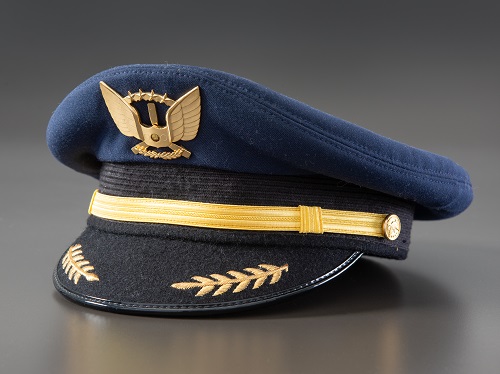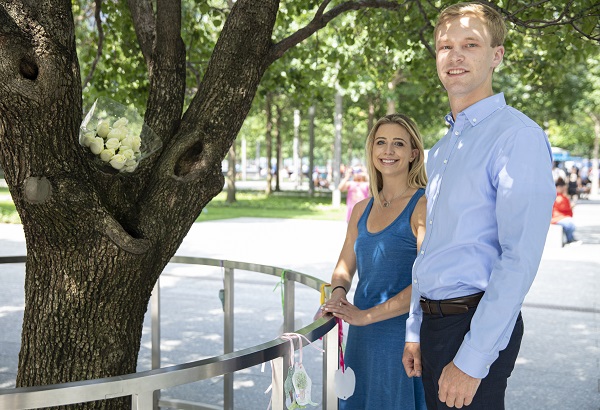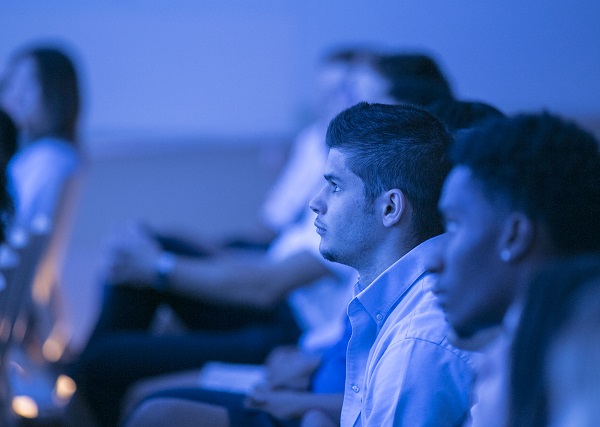Make a donation to the museum
9/11 Pilot’s Wife Helps Pass Law Protecting Flights From Hijackers
9/11 Pilot’s Wife Helps Pass Law Protecting Flights From Hijackers

Last October, the Saracini Aviation Safety Act was signed into law, giving fliers an added layer of protection 17 years after the terrorist attacks of September 11, 2001. The Act will be enacted beginning Oct. 6. In honor of Aviation Week, the 9/11 Memorial & Museum is paying tribute to the effort by families to increase the safety of commercial flights.
Among the 2,977 people killed on 9/11 were 246 passengers and crew members aboard the four planes hijacked by 19 terrorists who had breached the cockpits.
The Saracini Aviation Safety Act mandates the installation of secondary barriers on all newly manufactured for delivery commercial aircraft. Activists and lawmakers say their fight isn’t over—they’re still working to require retrofitting of these barriers on all commercial aircraft currently flying the skies.
“Without secondary barriers, we are just as vulnerable today as we were on that fateful day,” said Ellen Saracini in an official press release upon the legislation’s passage in the House of Representatives.
Mrs. Saracini spoke from experience. Her husband, Captain Victor J. Saracini, was killed during the hijacking of California-bound United Flight 175, which the terrorist pilots then deliberately flew into the South Tower of the World Trade Center 49 minutes after departing Boston.
Victor Saracini lived in Lower Makefield Township, Pa., with his wife and two daughters: then, 13-year-old Kirsten and 10-year-old Brielle.
A former Naval aviator, he was known as an adventurer who drove a Corvette and a motorcycle, flew Navy jets, went boating and traveled the world with his family. He was also a musician and was often seen at airports with a guitar slung over his shoulder.
Saracini was among the first people to report something amiss on the morning of 9/11.
Shortly after 8:30 a.m., when air-traffic controllers asked Saracini and his crew to scan the airspace for signs of a now nonresponsive American Airlines Flight 11, which was flying below cruising altitude, Saracini relayed his last message:
“We heard a suspicious transmission [from another aircraft] on our departure out of Boston—like someone keyed the mike and said everyone stay in your seats… Did you copy that?”
Unknown to Saracini and his co-pilot, Flight 11 had already been hijacked. At 8:42 a.m. five terrorists used knives, mace, and a bomb threat to commandeer Flight 175. In a subsequent call to a United Airlines ground worker, a flight attendant on board, most likely Robert Fangman, reported that Saracini and First Officer Michael Horrocks had been killed. The plane crashed into the South Tower at 9:03 a.m.
“I last spoke with Victor on the evening of the 10th,” his wife said. “He was upbeat. He was positive. He made me laugh as he usually did whenever he called. And he told me that he loved me, as he always did.”
At Saracini’s memorial services a week later, mementos placed in lieu of a casket conveyed the father and professional he was. Among the items displayed were his Navy flight jacket, a guitar, and a photo of him holding his smiling daughters.
The 9/11 Memorial Museum Collection includes an extra United Airlines uniform cap that Saracini kept at his home in Pennsylvania, donated by his widow, Ellen. Years later, the hat served as a surrogate for him at his youngest daughter’s wedding.

Ellen Saracini said she and her daughters have spent many days “wondering what might have been.”
“He loved ordinary days with his family, doing all the ordinary insignificant things that dads do with their little girls,” she said. “For the girls and myself there will be no more ordinary days.”
She said September 11 started like one of these ordinary days, with a “beautiful fall sunshine” that “bathed the entire East Coast from Boston to Washington.”
“Little did Victor realize that he was about to find himself in the most forward trench of a terrible new kind of war,” she said. “A war for which our nation and the world were totally unprepared.”
For her, the passage of Saracini Aviation Safety Act is about preventing the sort of catastrophe that struck so many families like hers nearly 18 years ago.
“On 9/11, terrorists stormed the cockpit knowing that the doors would be opened early in the flight. And until today, that flight deck remained vulnerable when the cockpit had to open,” said Rep. Josh Gottheimer, of New Jersey, upon the law’s passage. “Ellen Saracini’s bipartisan bill is now law and will help prevent another tragedy like 9/11 from ever occurring again.”
Saracini said she and other advocates want to make sure secondary barriers are on all commercial flights, not just in newly built planes.
“Our mission will continue until all commercial aircraft contain secondary barriers to protect passengers and crew,” she said.
The 9/11 Memorial & Museum commemorates Aviation Week every year through a series of flight crew–themed programming and free admission to both active and retired flight crewmembers. This year, Aviation Week runs August 18–24.
By Adam Warner, Editor, 9/11 Memorial & Museum
Previous Post
Children of 9/11 FDNY Officers Place Tribute at Survivor Tree to Commemorate Victims of Terrorism

In recognition of the second annual commemoration of the International Day of Remembrance of and Tribute to the Victims of Terrorism, two children of FDNY officers killed on 9/11 placed a tribute at the Survivor Tree on Wednesday.
Next Post
Sign Up for the 9/11 Memorial & Museum's Anniversary in the Schools Webinar Today

To further our mission to honor the 2,983 victims of the September 11, 2001 and February 26, 1993 attacks, we provide this annual webinar to reach students in all 50 states and internationally.